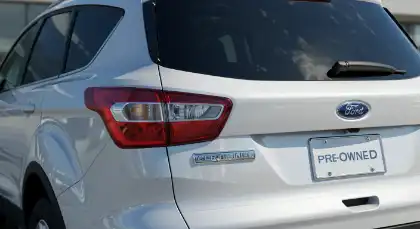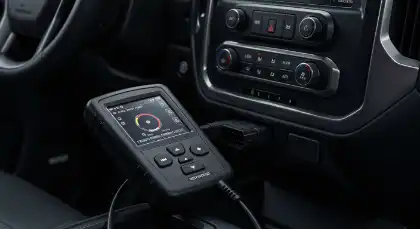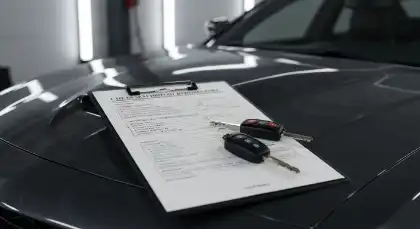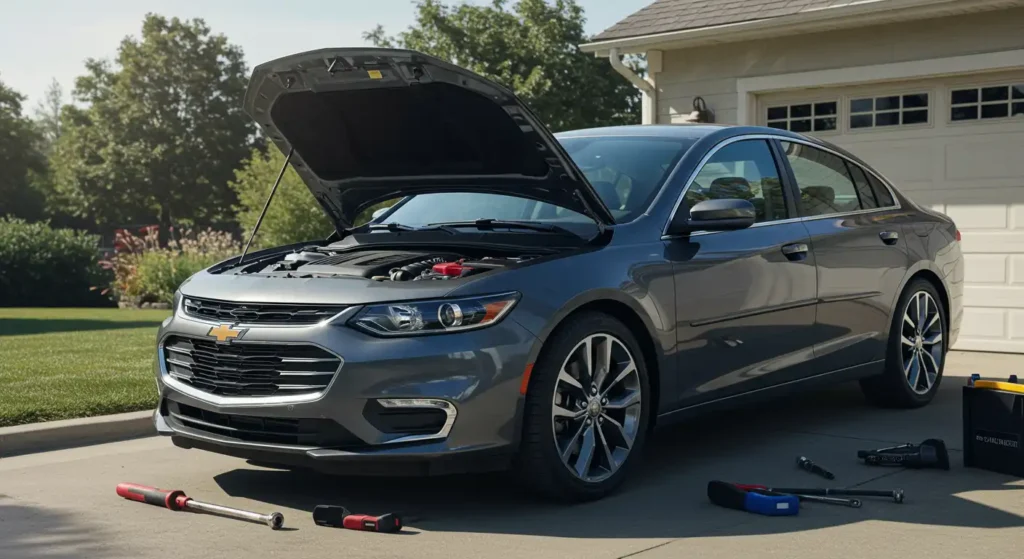When considering buying a reliable pre-owned vehicle, it’s crucial to understand the key considerations and steps to ensure a good deal. The market for used cars has gained significant traction due to several factors:
- High interest rates on new cars
- Increased new car prices
- Supply shortages of newer low-mileage vehicles
These dynamics have driven up the average prices for used cars, making careful selection even more important.
Benefits of purchasing a pre-owned vehicle include:
- Cost savings: Pre-owned cars generally come at a lower price compared to new ones.
- Slower depreciation: Used cars depreciate at a slower rate than new cars.
- Wide selection: A vast array of makes and models is available, often at competitive prices.
This is the ultimate guide to buying a reliable pre-owned vehicle, and it will help you navigate through the essential steps.
Understanding Certified Pre-Owned (CPO) Vehicles

Definition and Advantages of CPO Vehicles
Certified Pre-Owned (CPO) vehicles are used cars that have undergone a rigorous inspection process and come with a limited warranty from the manufacturer. Typically, these vehicles are late-model, low-mileage cars that meet specific criteria set by the manufacturer.
Advantages of CPO Vehicles:
- Thorough Inspection: CPO vehicles undergo a detailed multi-point inspection covering everything from mechanical components to cosmetic details.
- Limited Warranties: They come with extended warranties that usually include powertrain coverage and sometimes even bumper-to-bumper coverage.
- Roadside Assistance: Many programs offer additional perks such as roadside assistance and rental car reimbursement.
Pricing Comparison with Regular Used Cars
While CPO vehicles provide peace of mind, they often come at a premium compared to regular used cars. The extra cost reflects the inspection process, reconditioning, and added warranty benefits.
Pricing Differences:
- CPO Premium: Expect to pay more for CPO vehicles due to their certified status and additional benefits.
- Value for Money: The higher initial cost can be offset by the reduced risk of major repairs and the included warranty coverage.
Factors to Consider When Opting for CPO
When deciding whether to buy a CPO vehicle, several factors should be taken into account:
Considerations:
- Inspection Report: Review the detailed inspection report provided by the dealer to understand what has been checked and reconditioned.
- Warranty Terms: Compare the length and scope of the warranty with those of new cars or other used cars you are considering.
- Manufacturer’s Reputation: Look into the manufacturer’s CPO program reputation for reliability and customer satisfaction.
Evaluating these factors will help you determine if investing in a CPO vehicle aligns with your needs and budget.
Conducting Thorough Inspections for Pre-Owned Vehicles
Thorough inspections are non-negotiable when shopping for a reliable pre-owned vehicle. Skipping these steps can lead to unexpected expenses and headaches down the road.
Checking Vehicle History Reports
Start by obtaining a detailed vehicle history report from providers such as Carfax or AutoCheck. These reports reveal essential information like prior accidents, title issues, odometer discrepancies, flood damage, and maintenance records. A clean history doesn’t guarantee perfection, but red flags in the report are strong indicators to walk away.
Conducting Visual Inspections
Inspect the car personally or bring someone knowledgeable about cars. Look for signs of rust, dents, or mismatched paint that could indicate previous bodywork. Uneven tire wear may suggest alignment problems or suspension issues. Keep an eye out for fluid leaks beneath the vehicle and assess the condition of the lights, mirrors, windshield, and interior controls.
Performing this step in daylight improves your ability to spot flaws that might be hidden in poor lighting. For a more comprehensive approach to visual inspections, consider using a detailed used car inspection checklist that covers all essential aspects.
Significance of Test Drives
Take the car on a test drive across varied road types and speeds. Pay attention to strange noises from the engine or suspension, whether the steering pulls to one side, brake responsiveness, and unusual vibrations, as well as visibility and comfort of controls.
Test drives help you experience how the car truly handles and whether there are lingering mechanical or comfort issues.
Every used vehicle tells its own story through these checks. Missed details during inspection often turn into costly repairs later on. For first-time used car buyers in places like Sacramento, following these top tips can further enhance your buying experience.
Getting Mechanical Inspections Done by Trusted Professionals
Bringing a trusted mechanic into the process is one of the smartest moves outlined in “The Ultimate Guide to Buying a Reliable Pre-Owned Vehicle.” A seasoned professional can spot warning signs that an untrained eye might miss, saving you from expensive surprises down the road. Mechanics routinely check for issues such as:
- Worn suspension components
- Leaking fluids
- Brake wear and irregularities
- Signs of previous accident repairs that may not appear on a vehicle history report
Hidden issues like frame damage, flood exposure, or mismatched paint are not always visible during a basic walk-around or test drive. A comprehensive inspection by a trusted mechanic often includes putting the vehicle on a lift and using diagnostic tools to scan for trouble codes—steps that reveal problems lurking beneath the surface.
For electric vehicles (EVs), the inspection requires added expertise. Battery health determines both performance and long-term value. Ask your mechanic to run diagnostics on battery capacity and charging systems. Check for recalls on software or hardware specific to EVs. Reliable pre-owned EVs should come with verified battery warranties or recent service records.
A thorough mechanical inspection reduces risk and helps you negotiate with confidence, armed with facts about the true condition of your chosen car or EV.
Exploring Financing Options and Warranties for Pre-Owned Cars
Financing options for pre-owned vehicles differ from those available for new cars. Lenders often see used cars as a higher risk, which leads to:
- Higher interest rates: Expect to pay more in interest compared to new car loans.
- Shorter loan terms: Lenders may offer shorter repayment periods, resulting in higher monthly payments.
- Stricter approval criteria: Some banks set mileage or age limits on vehicles they’ll finance.
Preapproval from your own bank or credit union can give you bargaining power at the dealership. Comparing rates from multiple lenders helps you avoid unnecessary markups.
Extended warranties are common add-ons in the used car buying process. While they promise peace of mind, not every policy delivers real value:
- Benefits: Factory-backed warranties on certified pre-owned (CPO) cars usually cover major repairs and add resale appeal. They’re generally more reliable than third-party plans.
- Risks: Many extended warranties sold by dealerships or third-party providers have limitations, high deductibles, and exclusions that may not be clear upfront. Claims can be denied for vague reasons, leaving you with unexpected repair costs.
Buying a CPO vehicle often includes some level of warranty coverage by default. For non-certified used cars, it’s important to weigh the cost of an extended warranty against the likelihood of future repairs and the quality of the coverage offered.
Dealerships may aggressively push both financing packages and warranty add-ons. Bringing your own financing and carefully reading warranty details ensures you only pay for what adds true value.
Tips to Secure Better Deals on Reliable Pre-Owned Vehicles

Exploring Less Popular Models for Cost-Effectiveness
Opting for less popular models can offer substantial savings. While high-demand vehicles like SUVs and trucks often come with a premium, sedans and smaller cars might be undervalued despite their reliability. Brands like Mazda or Subaru may offer comparable quality to more mainstream brands, but at a lower cost.
Advantages of Buying Out Leases
Buying out leases can be a savvy move. Lease buyouts allow you to purchase the vehicle you’ve been driving, often at a predetermined price. This option can save money compared to similar models on dealer lots, especially if the car has been well-maintained and has low mileage.
Utilizing Online Tools for Informed Decisions
Online marketplaces such as CarGurus and AutoTrader provide tools to compare prices, check vehicle history reports, and read reviews. These platforms help you evaluate deals comprehensively, ensuring you make an informed decision without setting foot in a dealership. Utilize these resources to filter searches by safety features, mileage, and price to find the best deal on a reliable pre-owned vehicle.
By exploring these strategies, you can maximize your investment and ensure you drive away with a dependable used car at a great price.
Prioritizing Safety Features in Your Search for a Reliable Pre-Owned Vehicle
Safety technology has advanced rapidly, and many pre-owned vehicles now offer features once reserved for premium models. Advanced driver assistance systems (ADAS) have become more common in used cars from recent years. These systems include:
- Automatic emergency braking (AEB) with pedestrian detection
- Blind spot monitoring
- Lane keeping assist
- Adaptive cruise control
- Rear cross-traffic alert
Including these technologies in your search criteria can make a major difference in daily driving safety and accident prevention. ADAS features are proven to reduce the risk of collisions and injuries, making them a strong indicator of reliability—not just in terms of mechanical performance but also personal safety.
When reviewing listings, prioritize vehicles that advertise active safety packages or mention specific ADAS features. Models from 2018 onward are more likely to include these as standard or optional equipment. Safety recommendations from organizations like IIHS or NHTSA can help you identify which years and trims offer the best protection.
The Ultimate Guide to Buying a Reliable Pre-Owned Vehicle isn’t complete without emphasizing that airbags, anti-lock brakes, electronic stability control, and child seat anchors remain essential. Combining traditional safety hardware with modern ADAS features gives you peace of mind every time you drive.
Conclusion
Buying a reliable used car requires thorough research and informed decision-making. It is essential to:
- Conduct extensive research on reliability ratings from trusted sources.
- Follow proper inspection practices, including vehicle history reports, visual inspections, and test drives.
- Seek the expertise of trusted mechanics for mechanical inspections.
By using the insights provided in “The Ultimate Guide to Buying a Reliable Pre-Owned Vehicle,” you are better equipped to make a smart purchase that ensures both reliability and value. Prioritizing safety features and exploring various financing options can further enhance your buying experience. Making well-informed choices will help you secure a dependable pre-owned vehicle that meets your needs and budget.

